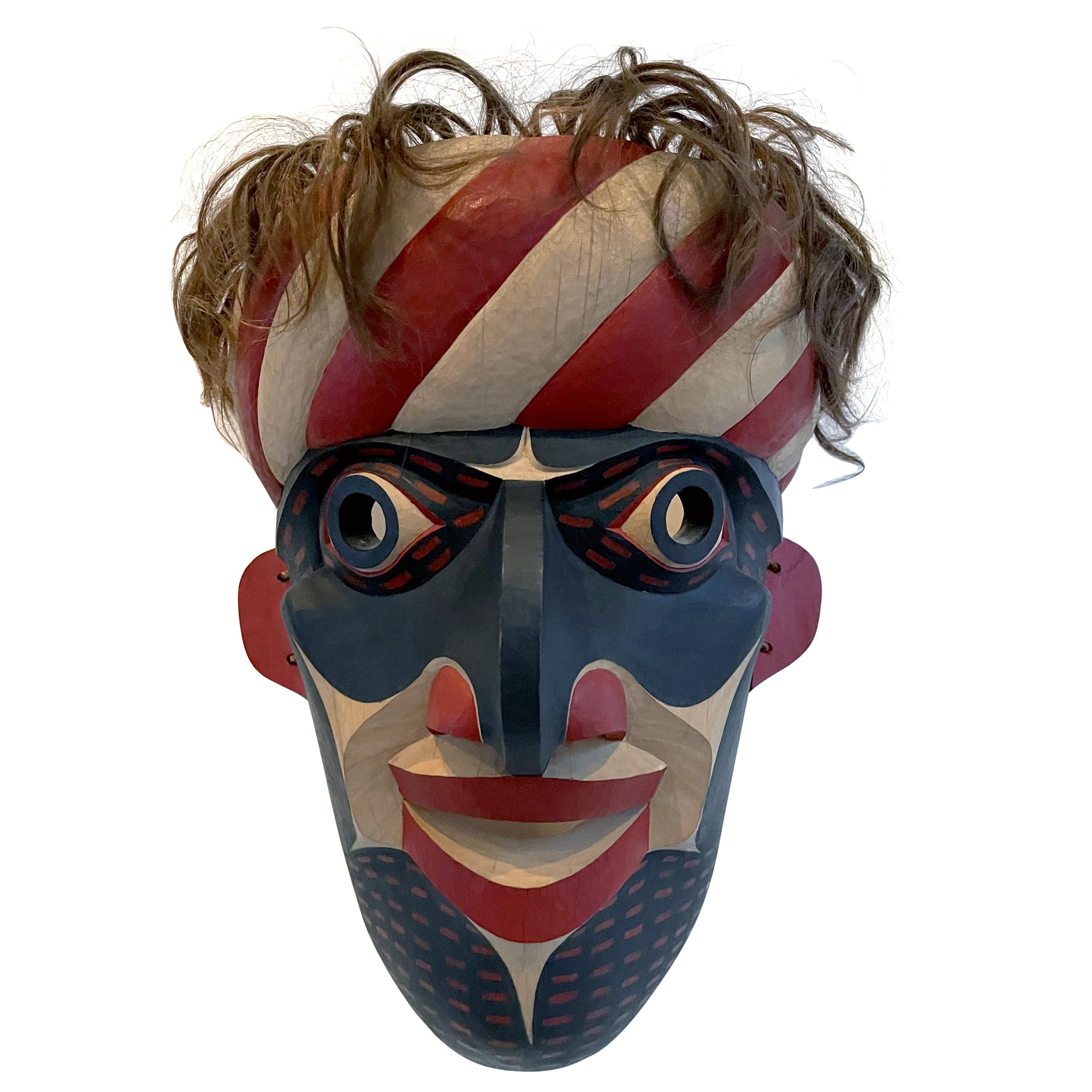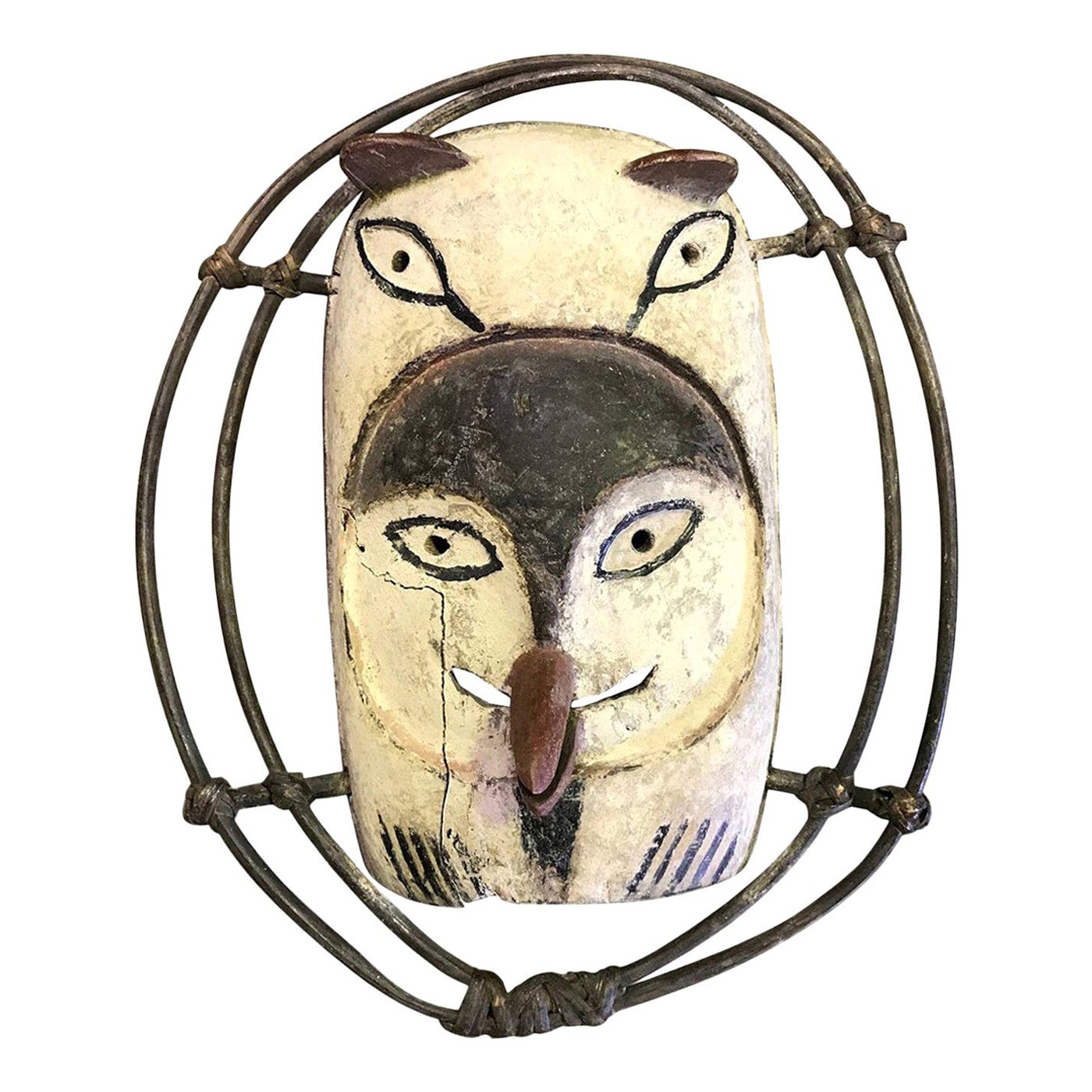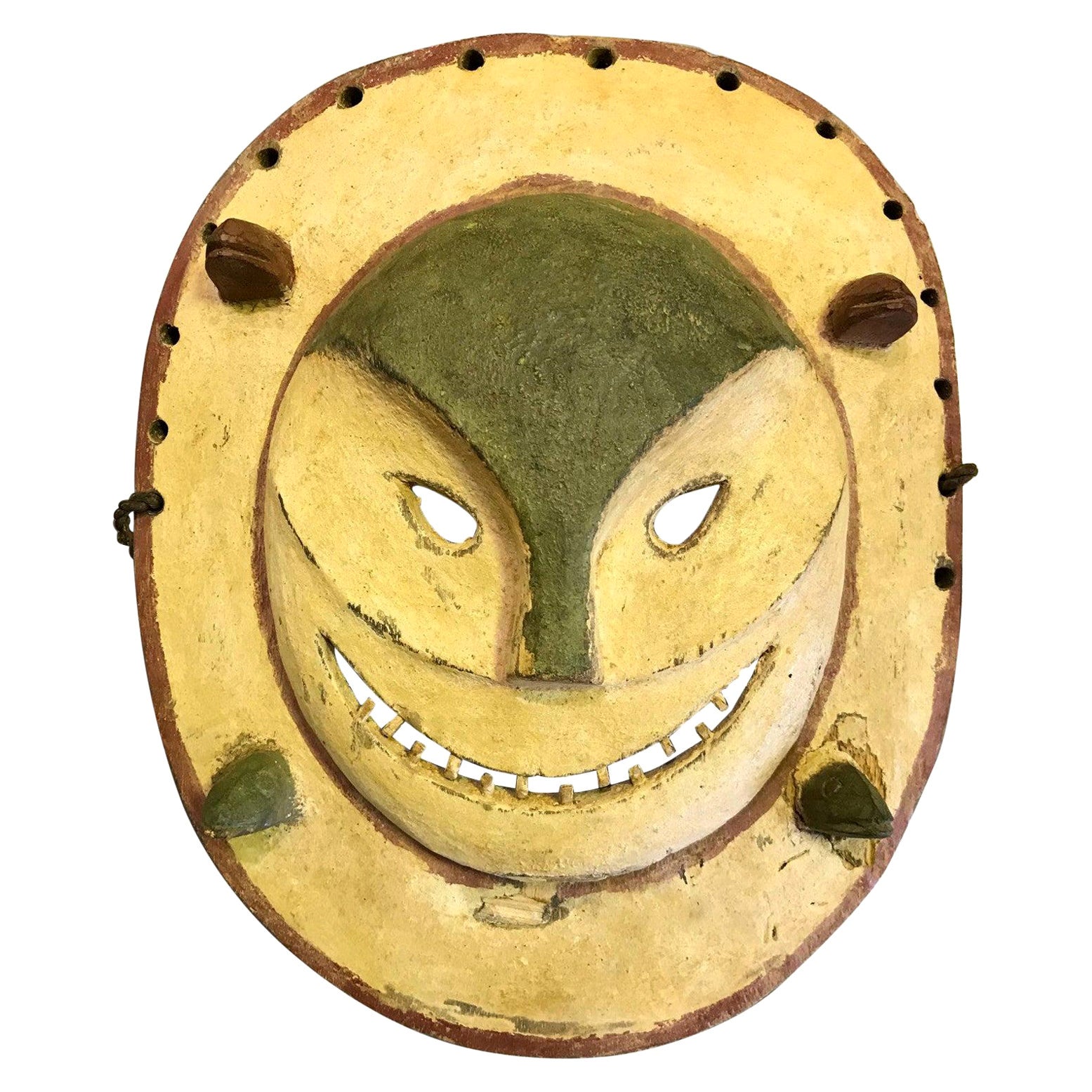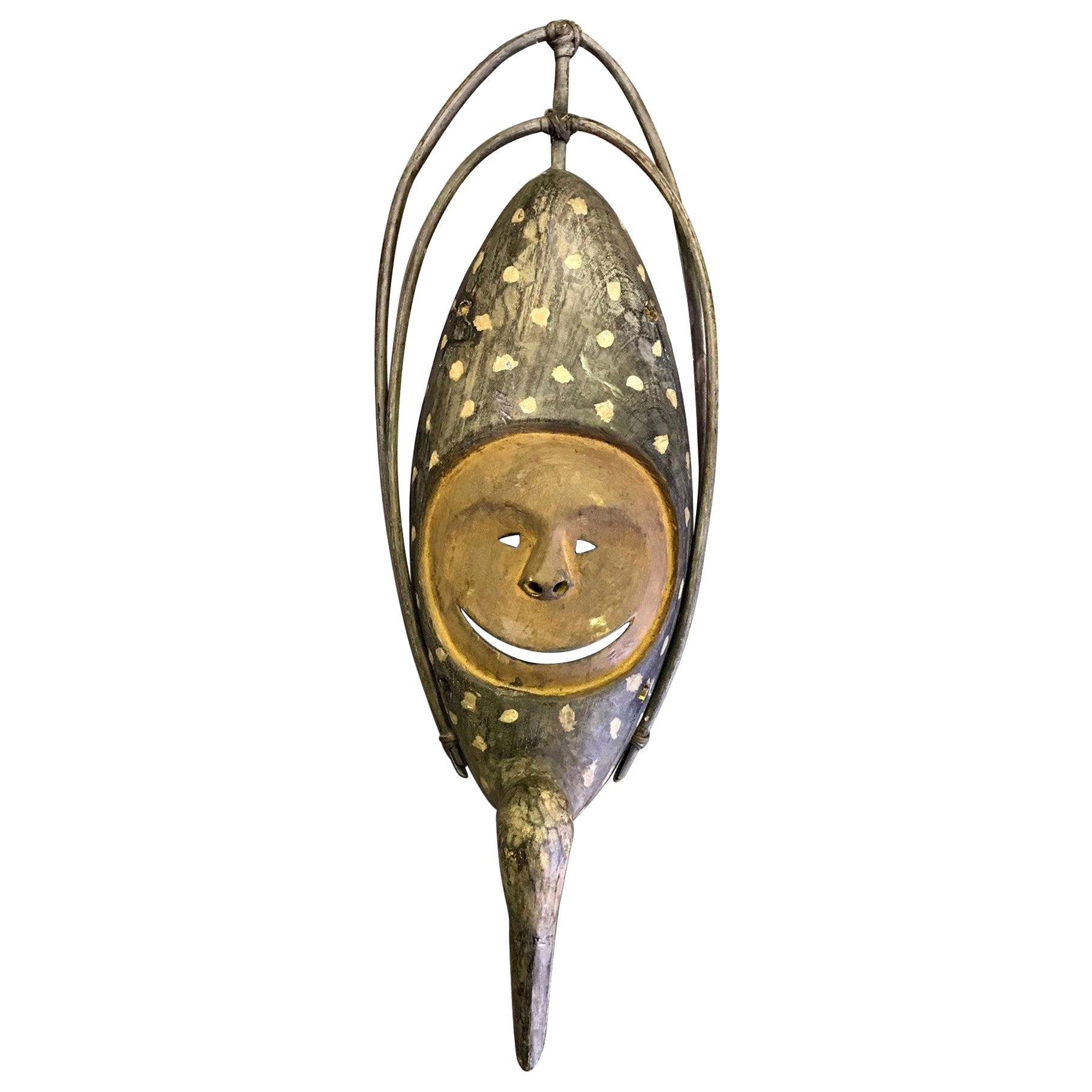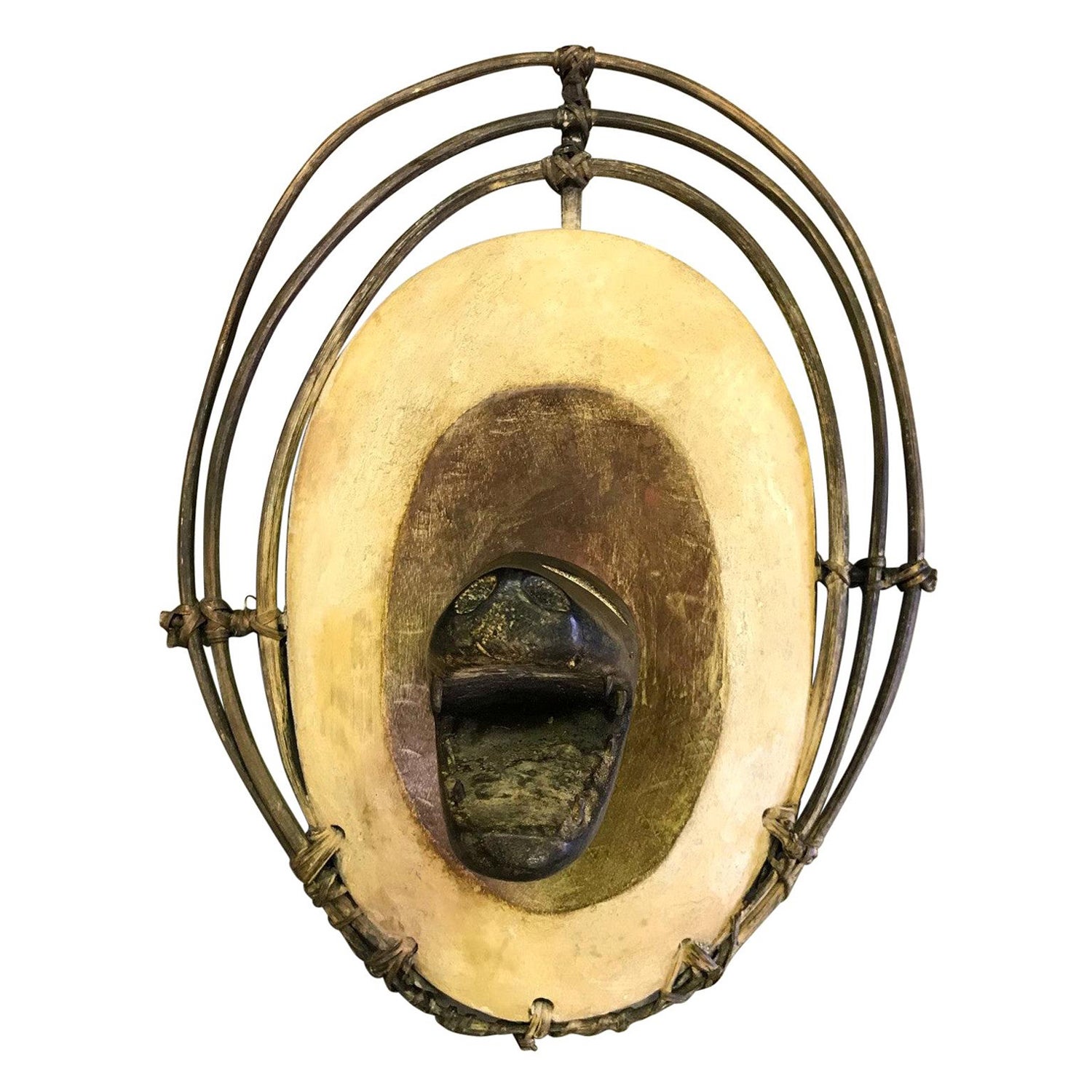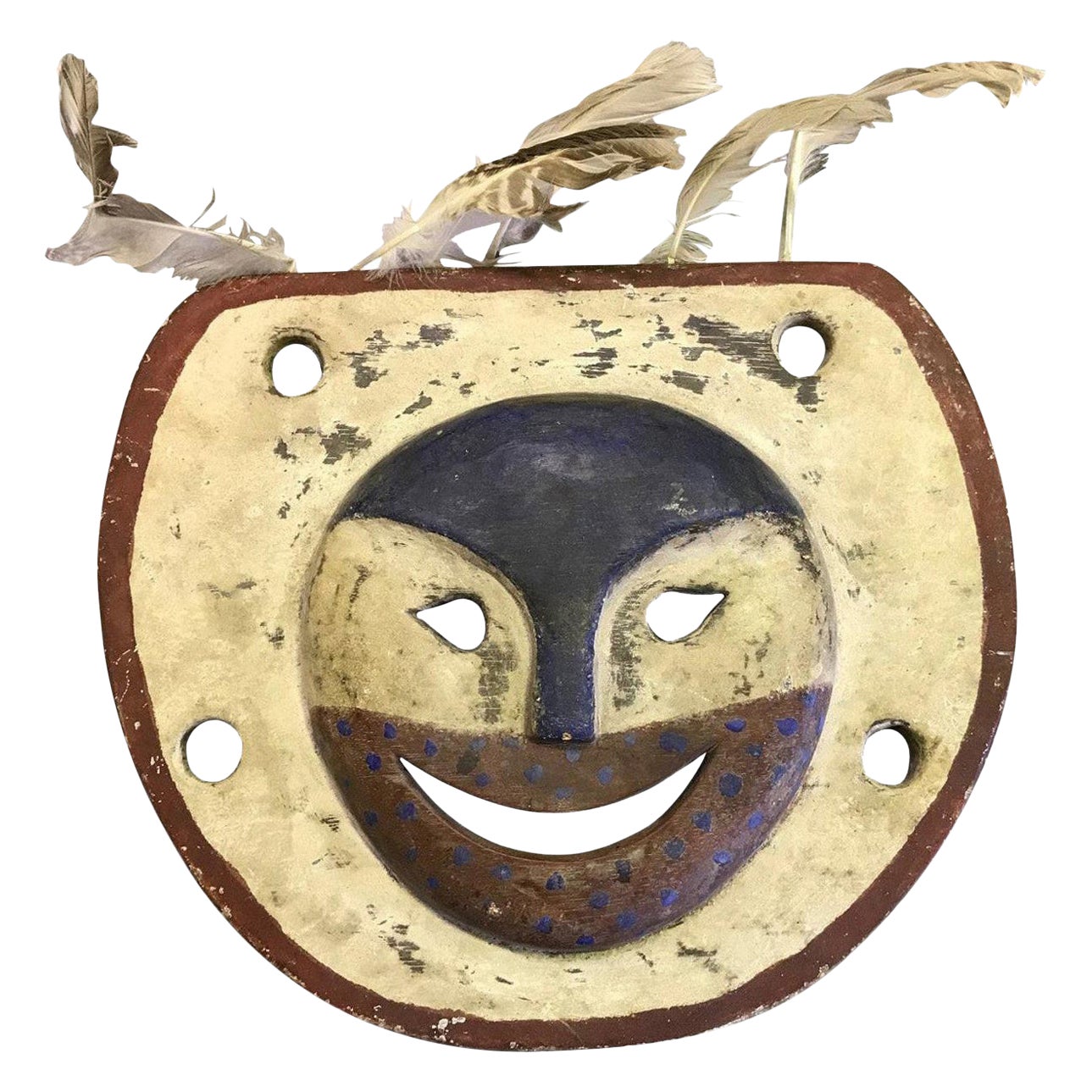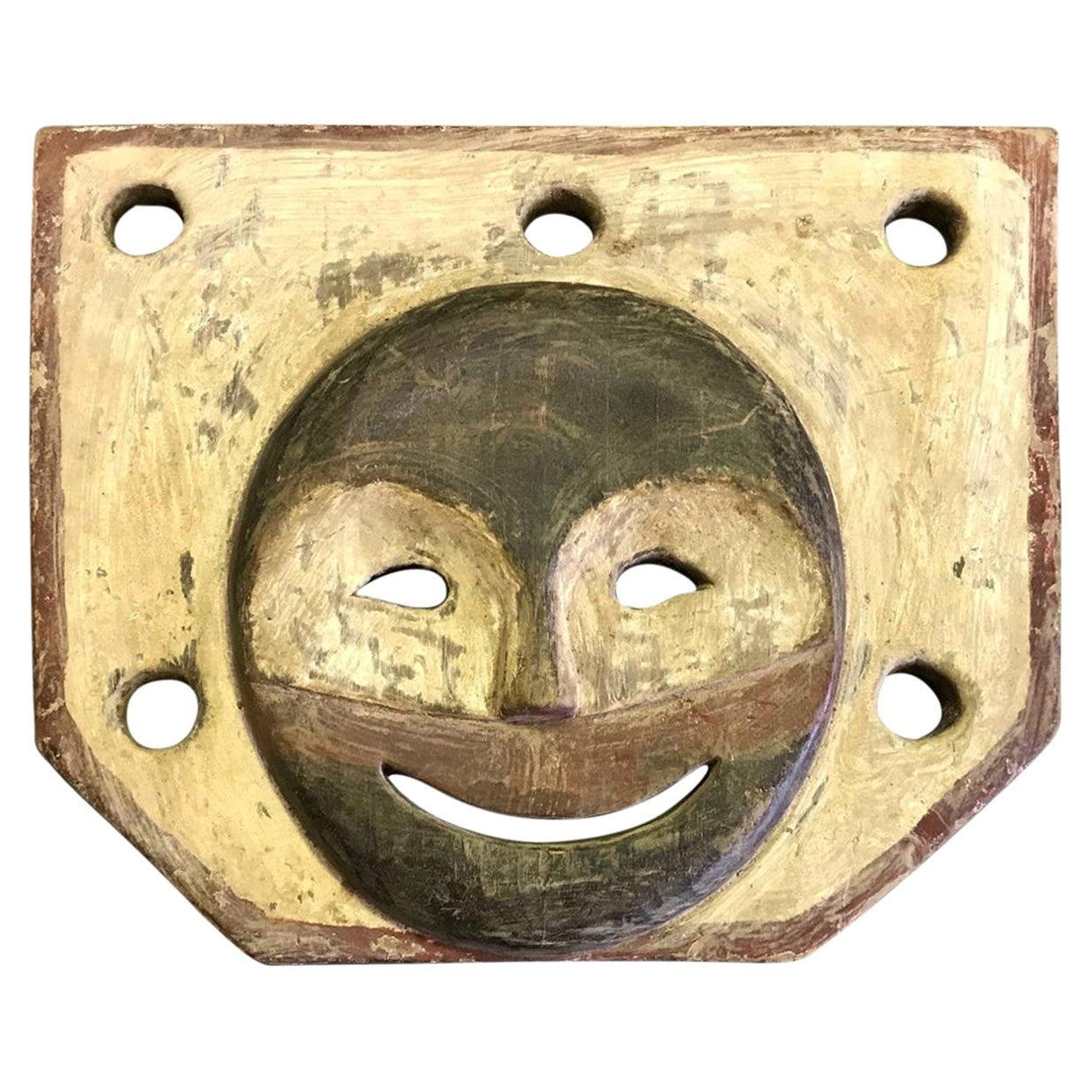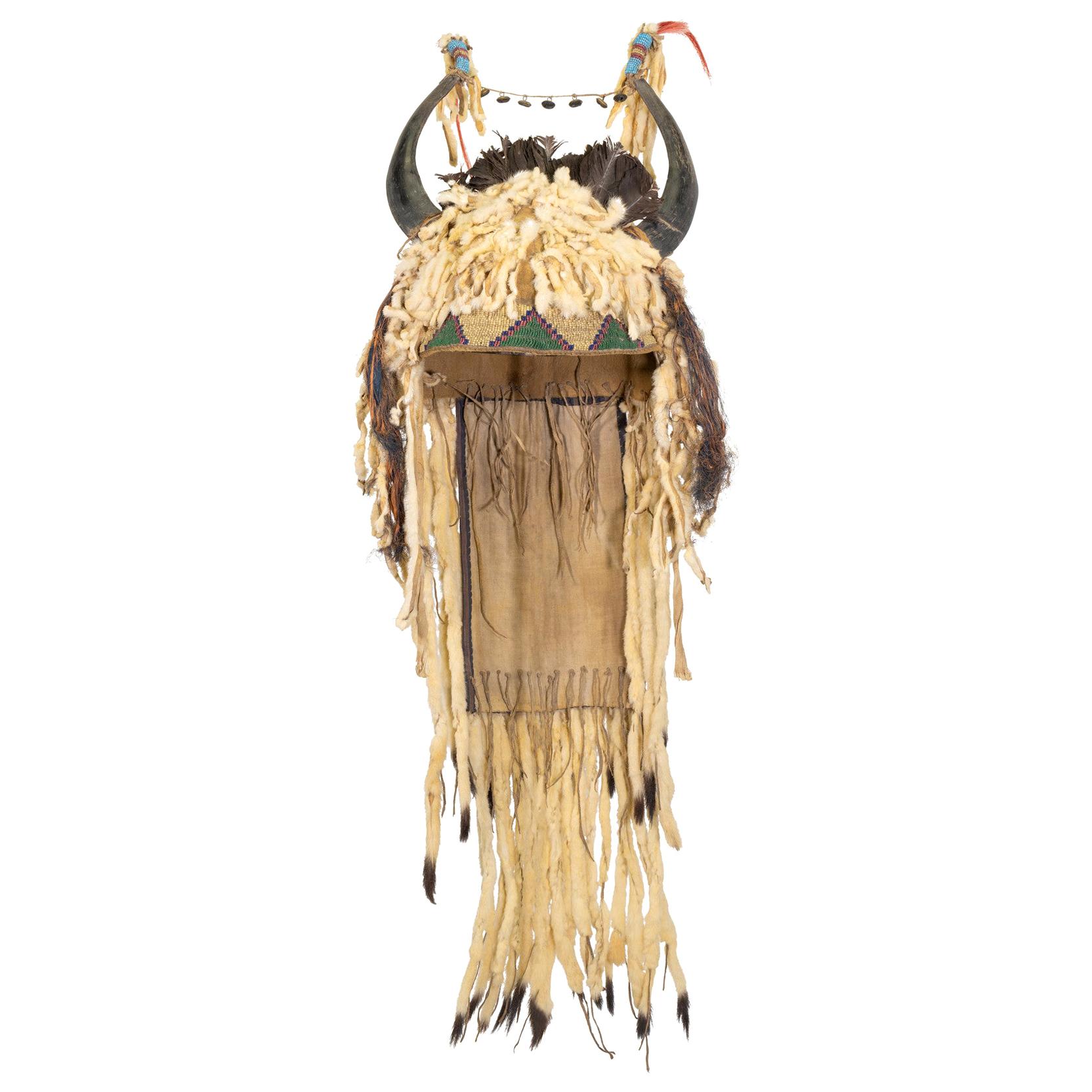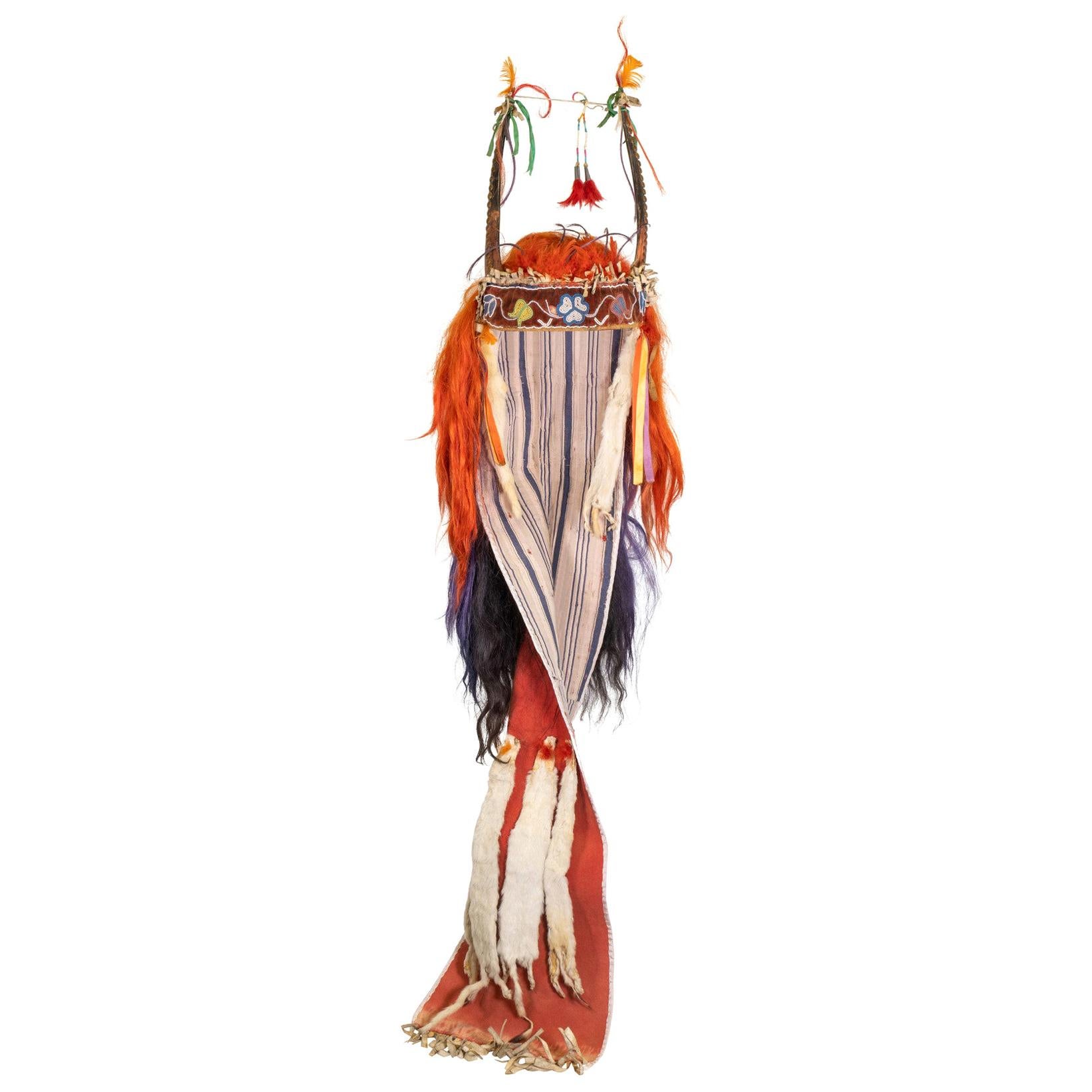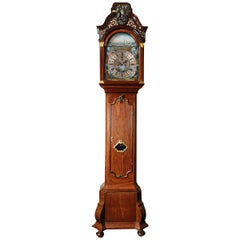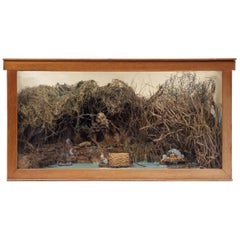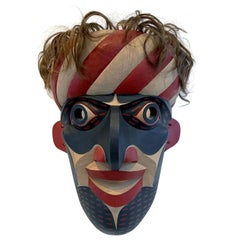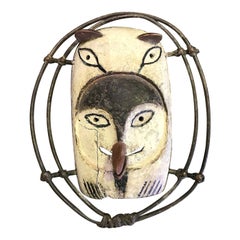
Kayapo Small Feather Headdress, Akkakry-Re
View Similar Items
Want more images or videos?
Request additional images or videos from the seller
1 of 2
Kayapo Small Feather Headdress, Akkakry-Re
About the Item
- Dimensions:Height: 29.93 in (76 cm)Width: 22.45 in (57 cm)Depth: 1.58 in (4 cm)
- Style:Native American (Of the Period)
- Materials and Techniques:
- Place of Origin:
- Period:
- Date of Manufacture:1930-1945
- Condition:Wear consistent with age and use.
- Seller Location:Amsterdam, NL
- Reference Number:1stDibs: LU5458220857072
About the Seller
5.0
Vetted Seller
These experienced sellers undergo a comprehensive evaluation by our team of in-house experts.
Established in 1985
1stDibs seller since 2020
19 sales on 1stDibs
Typical response time: 3 hours
More From This SellerView All
- Exceptional Surinam-Themed Amsterdam Long-Case ClockLocated in Amsterdam, NLA Surinam-themed Amsterdam long-case clock The Netherlands, 1746-1756, dial signed Nicolaas Weylandt/Amsterdam The case of the clock is made of Rio palisander veneer and snakewood, with the arch showing a painted scene of the harbour of Paramaribo, Fort Zeelandia and Dutch ships in anchorage, the spandrels decorated with figural representations of the four continents, the centre of the dial painted with Mercury, the god of trade, seated on a bale signed VCS (Vereenigde Compagnie Suriname), and one of the barrels bearing the initials “RBS,” on the left the river god of the Surinam river, with a Dutch three-master in the background. Measures: H 259 x W 60 x D 35 cm (case) Diameter 32 cm (clock dial) This exceptionally rare long-case clock probably was ordered by one of the many wealthy families living along the Amsterdam canals that owned or had shares in plantations in Surinam. It’s a successful marriage of the work of an accomplished 18th century Amsterdam clockmaker, a Dutch cabinetmaker working with exotic tropical timbers, a woodcarver familiar with both Dutch Rococo design and Surinamese iconography, and a painter with knowledge, whether first- hand or through other visualisations, of the Paramaribo waterfront. In the production of this Gesamtkunstwerk, only the name of the clockmaker is known: Nicloaas Weylandt (circa 1700-1754), who had a business situated on the Nieuwendijk near the Haarlemmersluis in Amsterdam from 1742 until his death. The case is made of imported timbers from Surinam; Rio-palisander and snakewood. A very similar clock-case, veneered in walnut, is illustrated in J. Zeeman, De Nederlandse staande klok...Category
Antique Mid-18th Century Dutch Dutch Colonial Grandfather Clocks and Lon...
MaterialsPalisander
- American Diorama, Follower Gerrit Schouten, Carib Indigenous VillageLocated in Amsterdam, NLFollower of Gerrit Schouten (second half of the 19th century) Diorama depicting a Carib Indigenous camp Carved wood, papier-mâché, paint on paper...Category
Antique 19th Century Surinamer Native American Objects
MaterialsClay, Twig, Wood, Paper, Feathers
- Unique Diorama Depicting a North-American River Scene with Natives and SettlersLocated in Amsterdam, NLUnique diorama depicting a North American river-scene United States of America, early 20th century Measures: H 36 x W 68.5 x D 34 cm The dioram...Category
Early 20th Century American Native American Objects
MaterialsOther
- Large Brazilian or Guyana Amazon Indigenous Macana War Club, 18th or EarlierLocated in Amsterdam, NLA splendid and rare Amazon indigenous wamara wood Macana war-club Southern-Guyana or Northern Brazil, Wapitxana group of the Aruak peoples, 18th century, possibly earlier Measure: H. 43 cm The deep patina of the club present, and the residue on the part where it was held, attest to its great age. This unusually large Macana is decorated with several incised whitened anthropomorphic and human figures, a decoration only found on one other documented club in the British Museum, which is illustrated in: Hjalmar Stolpe, Amazon Indian...Category
Antique Early 18th Century Brazilian Native American Objects
MaterialsHardwood
- A small Dutch colonial Indonesian tortoiseshell betel box with gold mountsLocated in Amsterdam, NLJakarta (Batavia), 18th century, apparently unmarked L. 14 x W. 9.5 x H. 4.7 cm Before settling down to business in the former Dutch East Indies, sirih had to be offered in the mos...Category
Antique Late 18th Century Indonesian Dutch Colonial Antiquities
MaterialsGold
- Dutch-Colonial 18th Century Small Children's or Ladies Bureau with Silver MountsLocated in Amsterdam, NLA Dutch-colonial Indonesian small Albizia adoratissima, Nangka and Ambalo wood Lady’s tambour bureau with silver mounts Batavia (Jakarta) or Palembang, late 18th century H. 129.5 x W. 70 x D. 39 cm The tambour desk or bureau a` cilindre came into fashion in the Dutch East Indies of the late 18th century, when French forms prevailed in the Netherlands. The carvings on the apron and the stiles on the sides and at the top of the central stile are typical Indonesian designs. This small piece of furniture is not a miniature but was probably used as a regular bureau-cabinet by colonial society women of Indonesian-European descent. They usually are smaller than European women and often didn’t use chairs but sat or kneeled, and even slept on the floor for coolness. Earlier that century Dutch-colonial Indonesian and Cape Dutch...Category
Antique 18th Century Indonesian Dutch Colonial Children's Furniture
MaterialsWood
You May Also Like
- Carved Tribal Mask from Pacific Northwest Coast by David FrankelLocated in Atlanta, GAA striking carved and painted mask in the tradition of the Native Indian tribes from Pacific Northwest Coast by David Frankel in 1994. The mask...Category
1990s American Native American Masks
MaterialsNatural Fiber, Wood
- Yupik Yup'ik Native American Alaska Carved Polychrome Wood Anthropomorphic MaskLocated in Studio City, CAA fantastic and somewhat playful mask by the Yup'ik (Yupik) aboriginal, indigenous people of South-Western & South Central Alaska. The Yup'ik people, who are related to the Inuit peoples, have a long history of ceremonial mask making. Yup'ik masks were originally and specifically designed by Shamans and made to be worn by these spiritual leaders in Winter tribal dances and sacred ceremonies. Traditionally, the masks were destroyed or discarded after use in these ceremonies. Very few of these masks survived. After Christian contact in the late 19th century, masked dancing was suppressed and the tradition all but died out. As more outsiders settled in Alaska at the turn of the century, masks were made by the Yup'ik people to sell or trade for necessary goods. It is likely that this mask was created some years later for this purpose. In the 20th century, Yup'ik mask had a profound influence on many renowned surrealist artists including, Max Ernst, Joan Miro, Leonora Carrington, Victor Brauner, and most notably Andre Breton who was an avid collector of Yup'ik masks. This fantastic anthropomorphic mask is carved of lighter wood, hand painted and decorated with pigment, and held together with natural fiber. The mask seems to represent some sort of smiling, benevolent spirit or character with its four eyes, bird beak, and cat-like ears. The mask is from a French collection. We were told that this mask, as well as others in the collection we have listed, was acquired originally in the 1950s-1960s in Alaska and the Yukon territory in Canada but as we have no way to verify or authenticate this. Please note we are listing the masks as decorative and not as actual tribal artifacts...Category
20th Century American Masks
MaterialsWood, Paint, Natural Fiber
- Yupik Yup'ik Native American Alaska Carved Polychrome Wood Anthropomorphic MaskLocated in Studio City, CAA truly fascinating mask by the Yup'ik (Yupik) aboriginal, indigenous people of South-Western & South Central Alaska. The Yup'ik people, who are related to the Inuit peoples, have a ...Category
20th Century American Masks
MaterialsNatural Fiber, Wood, Paint
- Yupik Yup'ik Native American Alaska Polychrome Wood Anthropomorphic Spirit MaskLocated in Studio City, CAA fantastic, somewhat sinister appearing mask by the Yup'ik (Yupik) aboriginal, indigenous people of South-Western & South Central Alaska. The Yup'ik people, who are related to the I...Category
20th Century American Masks
MaterialsWood, Paint
- Yupik Yup'ik Native American Alaska Carved Polychrome Wood Anthropomorphic MaskLocated in Studio City, CAA fantastic mask by the Yup'ik (Yupik) aboriginal, indigenous people of South-Western and South Central Alaska. The Yup'ik people, who are related to the Inuit peoples, have a long history of ceremonial mask making. Yup'ik masks were originally and specifically designed by Shamans and made to be worn by these spiritual leaders in winter tribal dances and sacred ceremonies. Traditionally, the masks were destroyed or discarded after use in these ceremonies. Very few of these masks survived. After Christian contact in the late 19th century, masked dancing was suppressed and the tradition all but died out. As more outsiders settled in Alaska at the turn of the century, masks were made by the Yup'ik people to sell or trade for necessary goods. It is likely that this mask was created some years later for this purpose. In the 20th century, Yup'ik mask had a profound influence on many renowned surrealist artists including, Max Ernst, Joan Miro, Leonora Carrington, Victor Brauner, and most notably Andre Breton who was an avid collector of Yup'ik masks. This fantastic anthropomorphic mask is carved of lighter wood, hand painted and decorated with pigment, and held together with natural fiber. A native bird can see seen attached to the smiling figure's chin. The mask is from a French collection. We were told that this mask, as well as others in the collection we have listed, was acquired originally in the 1950s-1960s in Alaska and the Yukon territory in Canada but as we have no way to verify or authenticate this. Please note we are listing the masks as decorative and not as actual tribal artifacts...Category
20th Century American Masks
MaterialsNatural Fiber, Wood, Paint
- Yupik Yup'ik Native American Alaska Polychrome Wood Anthropomorphic Spirit MaskLocated in Studio City, CAA fantastic mask by the Yup'ik (Yupik) aboriginal, indigenous people of South-Western & South Central Alaska. The Yup'ik people, who are related to the Inuit peoples, have a long his...Category
20th Century American Masks
MaterialsNatural Fiber, Wood, Paint
Recently Viewed
View AllMore Ways To Browse
Tribe Feather
Feather Tribe
Native American Headdress
Native American Headdresses
Feather River
Brazilian Art Brasil
Brazil Folk
Brazil Folk Art
Tribe Headdress
Antique Native American Headdress
Native American Feather Headdress
Brazilian Headdress
Brazilian Masks
Brazil Feather Headdress
Brazilian Feathered Headdresses
Brazil Headdress
Kayapo Headdress
Polychrome Mask
